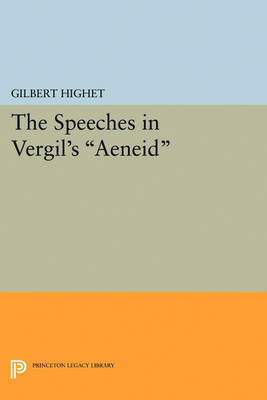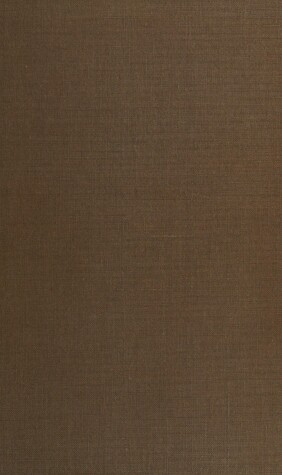Princeton Legacy Library
2 total works
In the Aeneid men, women, gods, and goddesses are characterized by the speeches assigned to them far more than by descriptions of their appearance or behavior. Most of the speeches are highly emotional and individualized, reminding us of the most powerful utterances of Greek tragedy.
Gilbert Highet has analyzed all the speeches in the Aeneid, using statistical techniques as well as more traditional methods of scholarship. He has classified the speeches; identified their models in earlier Greek and Latin literature; analyzed their structure; and discussed their importance in the portrayal of character. He finds that Vergil used standard rhetorical devices with discretion, and that his models were poets rather than orators. Nevertheless, this study shows Vergil to have been a master dramatist as well as a great epic poet.
Originally published in 1972.
The Princeton Legacy Library uses the latest print-on-demand technology to again make available previously out-of-print books from the distinguished backlist of Princeton University Press. These editions preserve the original texts of these important books while presenting them in durable paperback and hardcover editions. The goal of the Princeton Legacy Library is to vastly increase access to the rich scholarly heritage found in the thousands of books published by Princeton University Press since its founding in 1905.
Literary satire assumes three main forms: monologue, parody, and narrative (some fictional, some dramatic). This book by Gilbert Highet is a study of these forms, their meaning, their variation, their powers. Its scope is the range of satirical literature—from ancient Greece to modern America, from Aristophanes to Ionesco, from the parodists of Homer to the parodists of Eisenhower. It shows how satire originated in Greece and Rome, what its initial purposes and methods were, and how it revived in the Renaissance, to continue into our own era.
Contents: Preface. I. Introduction. II. Diatribe. III. Parody. IV. The Distorting Mirror. V. Conclusion. Notes. Brief Bibliography. Index.
Originally published in 1962.
The Princeton Legacy Library uses the latest print-on-demand technology to again make available previously out-of-print books from the distinguished backlist of Princeton University Press. These editions preserve the original texts of these important books while presenting them in durable paperback and hardcover editions. The goal of the Princeton Legacy Library is to vastly increase access to the rich scholarly heritage found in the thousands of books published by Princeton University Press since its founding in 1905.

